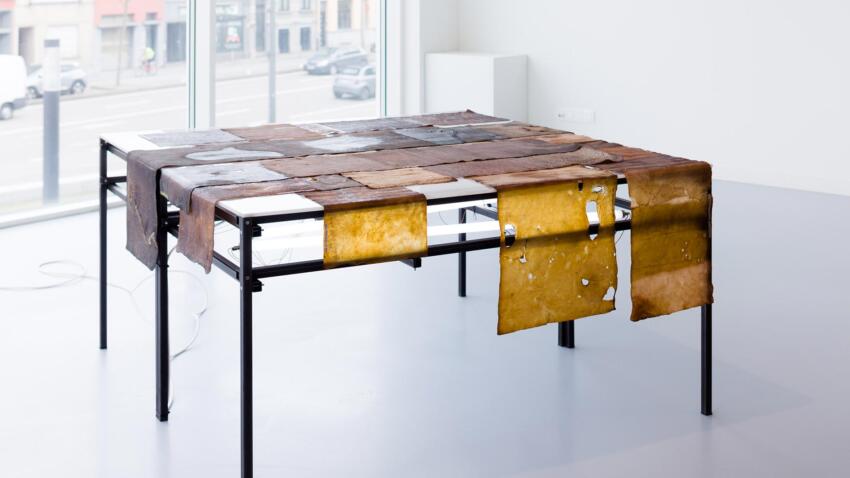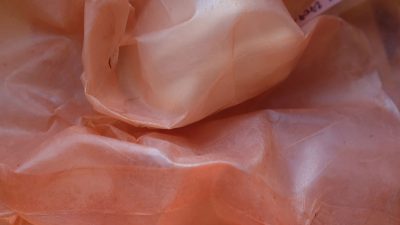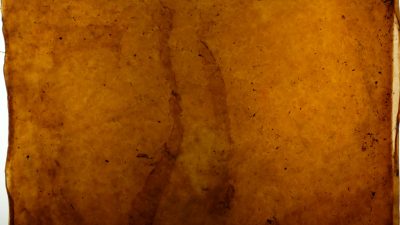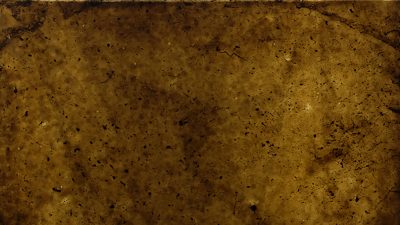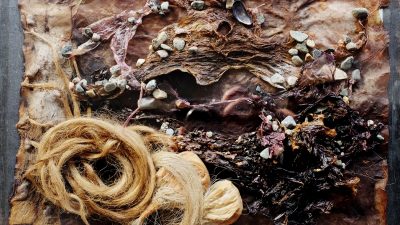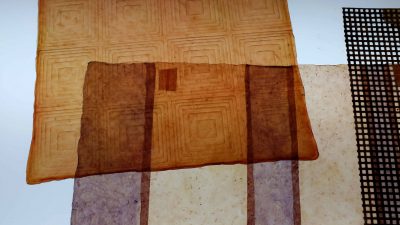A selection of bacterial grown skins, microbial cellulose, in different sizes and thickness. Structures are variable. All colored with 100% naturel vegetal dyes, grown in the Brussels Urban Open Air Lab.
If there’s one medium whose origins trace back to the dawn of humanity, it is textiles. They can be spun, woven, knitted, they are traces of human beings and of their emotions as well as of their existence. They are the body’s imprints, the manufactured skins, the pride, and the glory of mankind.
The history of textiles is deeply intertwined with that of mathematics; weaving techniques are testimonies of the imagination, of the intelligence, of the capacity of the human being to transform an idea into matter, a utopia into reality. They have been used to protect, to separate, to identify, to catch and to hide, to distinguished, and to represents our dreams and tales, like The Lady and the Unicorn. The tapestry has always been a medium that speaks about our societies.
It is no wonder that textiles are now returning to the forefront of the art scene since they have never really left it. Both the thread and the line always stand as reflections; they are the vectors of all creation.
Colin Ledoux for the exhibition “Garden of Time”, 2020
The textile, whether it is cotton, wool, linen, or any other material, comes as a thread, a thread which forms lines, sometimes crossed, sometimes organized by knots – an expression of a hand loaded with historical knowledge. And each node, like the tops of a labyrinth or the points of a rhizome are charged with the signs of a time and a place, as the most faithful representation of our inner world.
When we look at the ancient Incan Quipus, even though their meaning can be obscure, we know that it was knotted by a person in Caral-Chupacigarro, Peru 4,500 years ago. And when we think about this person, we think of their culture, of their time and of all the mysteries that come with the Inca and Maya civilizations.
In one of his lessons, Michel Foucault recounts that Persian rugs were originally designed by princes to represent their gardens and thus proudly transport them to foreign courts. The art of tapestry would, therefore, be the art of making flying gardens, a physical translation of our most extraordinary thoughts.

